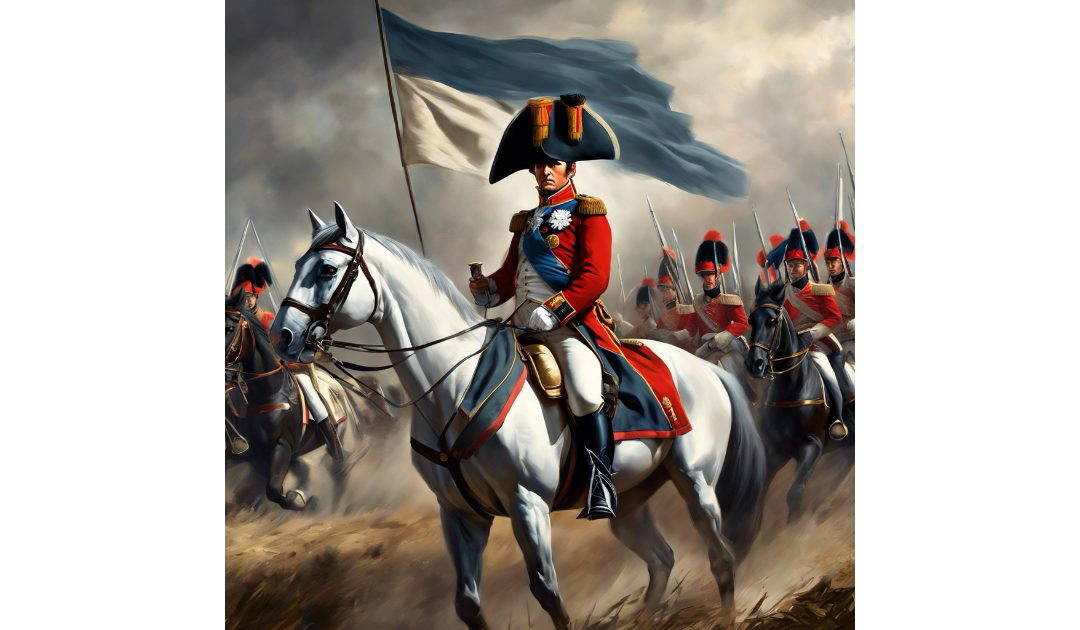Having served as an officer in the Royal Naval Reserve, when it comes to battles of 1805, I think of Trafalgar. Yet ashore the battle of the year was Austerlitz.
The Battle of Austerlitz, also known as the Battle of the Three Emperors, was fought on the second of December 1805, near the town of Austerlitz (modern-day Slavkov u Brna in the Czech Republic). It is widely regarded as Napoleon Bonaparte’s greatest military victory. This pivotal conflict during the Napoleonic Wars saw the French Empire decisively defeat a coalition army of Russia and Austria, commanded by Tsar Alexander I and Holy Roman Emperor Francis II.
The battle occurred during the War of the Third Coalition, which was formed by Britain, Russia, and Austria to counter Napoleon’s expanding influence. After defeating Austrian forces at Ulm, Napoleon marched his Grande Armée towards Vienna. By late November 1805, Napoleon was facing a combined Russo-Austrian force near Austerlitz.
Napoleon deliberately weakened his right flank, feigning vulnerability to entice the coalition to attack. This ruse aimed to lure the allies into overextending themselves, allowing the French to counterstrike decisively. Napoleon’s army numbered around 73,000 men, while the coalition fielded approximately 85,000 troops.
The battle began early on December 2 with a coalition attack on the French right flank, near Telnitz and Sokolnitz. As expected, the allies concentrated their forces there, seeking to outflank the French. However, this movement weakened their center. Napoleon capitalized on this by launching a devastating assault, led by Marshal Soult, against the Pratzen Heights, the coalition’s central position.
The French rapidly seized the heights, splitting the Russo-Austrian army in two. While the allies attempted to regroup, Napoleon unleashed further attacks to exploit their disarray. A French cavalry charge and precise artillery fire compounded the chaos.
On the southern flank, Marshal Davout’s III Corps held firm against superior coalition numbers, preventing the allies from breaking through. Meanwhile, French forces encircled and annihilated several enemy formations. By late afternoon, the coalition army was in full retreat, suffering devastating losses.
The coalition suffered approximately 36,000 casualties, including 15,000 killed or wounded and 21,000 captured. French losses were relatively light, around 9,000. The victory solidified Napoleon’s reputation as a military genius and shattered the Third Coalition. Austria signed the Treaty of Pressburg shortly after, ceding significant territory to France and its allies. The Holy Roman Empire dissolved the following year, replaced by the French-dominated Confederation of the Rhine.
Austerlitz demonstrated Napoleon’s mastery of strategy, particularly his use of deception, speed, and the concentration of forces at decisive points. The battle also highlighted the effectiveness of the Grande Armée’s flexible organization and disciplined troops.
The Battle of Austerlitz remains a landmark in military history and a testament to Napoleon’s tactical brilliance. It cemented his dominance in Europe and reshaped the continent’s political landscape, laying the groundwork for further French conquests. However, it also sowed the seeds of future coalitions determined to resist Napoleon’s ambitions.

